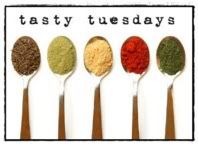Now that I live in Texas, obtaining good quality shrimp is a little more of a challenge. Fortunately, parts of Texas are on the Gulf of Mexico, too, so we often have access to high quality shrimp even here in land-locked Dallas. The price, though, is significantly higher than what we used to pay in Louisiana.
Believe it or not, whenever we drive to South Louisiana, we take a couple large coolers and bring back fresh shrimp. We go to an open-air market in Westwego on New Orleans' Westbank where fishermen directly sell fish, crabs, and shrimp to the consumer.
 | |
| Source: www.bestofneworleans.com |
The best way to freeze shrimp is to de-head them (keep the shells on, though), load them into quart-sized Ziplock freezer bags (about 1 1/2 to 2 pounds per bag) and fill the bags with water. Then lay the bags flat on a sheet tray and pop them in the freezer. When the individual bags are frozen, load several bags into a gallon-sized Ziplock freezer bag for extra protection.
Shrimp frozen in this manner taste fresh many, many months later. I am just finishing the shrimp we got over a year ago, and they are still high quality in both taste and texture. To defrost, plug your sink and fill halfway with tepid water. Slit the ziptop bags and let the shrimp thaw in the water, stirring occasionally to separate.
Today I made Louisiana shrimp with Asian flavors. This is an interesting twist on traditional boiled shrimp cocktail. Don't skip the homemade mayonnaise--it's delish!
Asian Boiled Shrimp
(click here to print)
Boiling Liquid
One 2-inch piece of peeled ginger root, sliced
3 lemons, halved, juiced (reserve shells)
1/2 cup soy sauce (I use low-sodium)
1/4 cup sugar
4 bay leaves
2 Tbsp. chopped green onions (about 2 onions)
2 tsp. minced garlic (about 2 medium cloves)
1 Tbsp. kosher salt
1 tsp. ground pepper
2 tsp. crushed red pepper
6 cups water
Combine all ingredients in a heavy saucepan and bring to a rolling boil.
Sprinkle 2 lbs. shelled and deveined Gulf shrimp with 2 tsp. Emeril's Essence (find recipe here)
Add shrimp to the boiling water. Cook for exactly 2 minutes. Remove from heat and let the shrimp steep for an additional 2 minutes. You do not want to cook the shrimp longer or they will be rubbery.
Asian Mayonnaise
1 large egg yolk (room temperature)
2 tsp. fresh lemon juice
1 tsp. minced fresh ginger
1/2 tsp. minced garlic (about 1 small clove)
1 tsp. green onion
1 cup vegetable oil (I used canola)
1 Tbsp. soy sauce
1 Tbsp. cilantro, chopped
1/2 tsp. ground pepper
1/2 tsp. sesame oil
1/4 tsp. salt
Combine egg yolk, lemon juice, garlic, ginger and green onions in food processor. Process until combined. SLOWLY add the oil through the feed tube while the motor is running so that it makes an emulsion (thickens). Add soy sauce, cilantro, pepper, sesame oil, and salt. Pulse a couple of times to combine. Remove to bowl and chill thoroughly. Let stand a couple of hours for best flavor, but use within 24 hours.
C'est Bon, Cher!
Linking to:




















